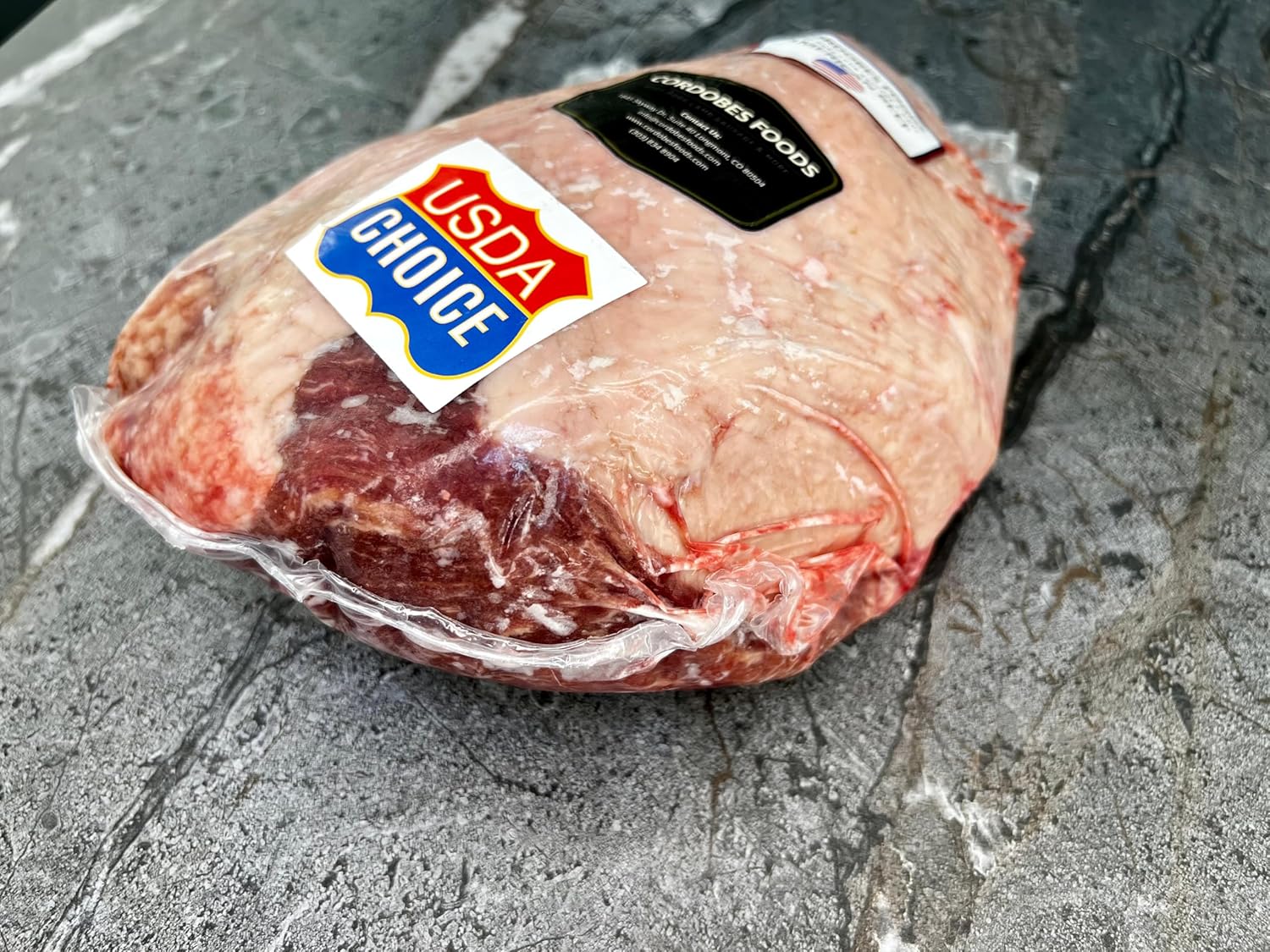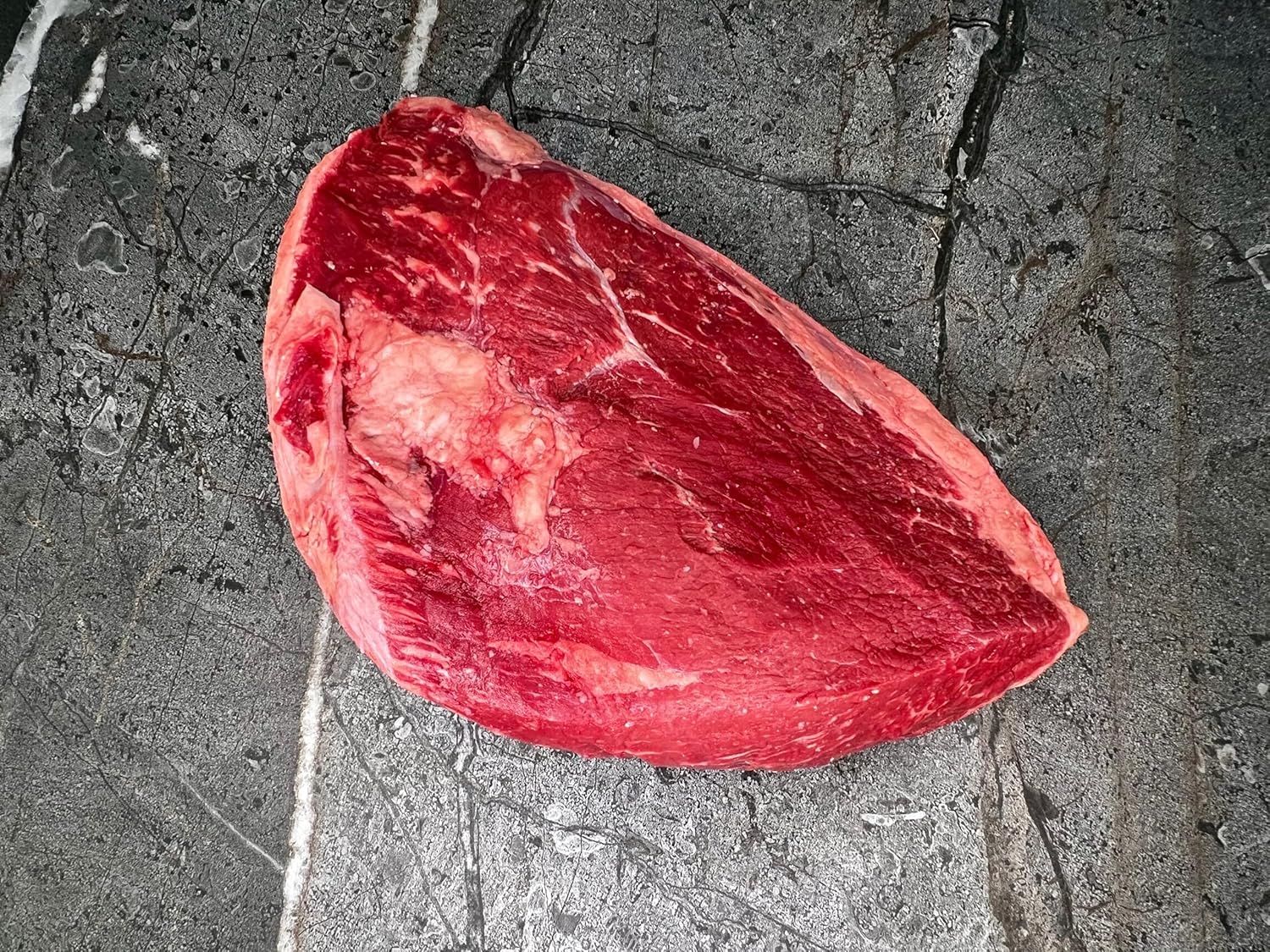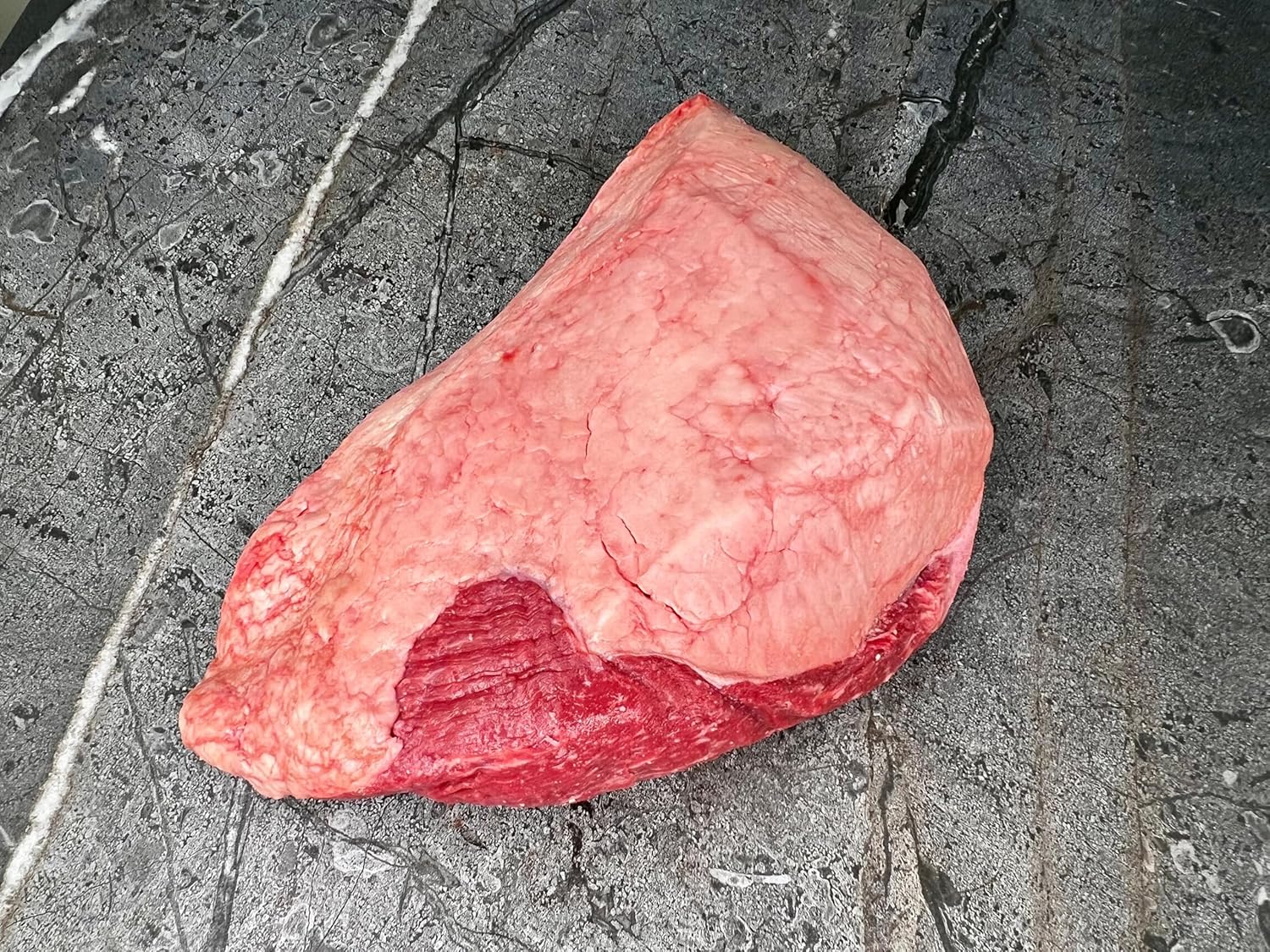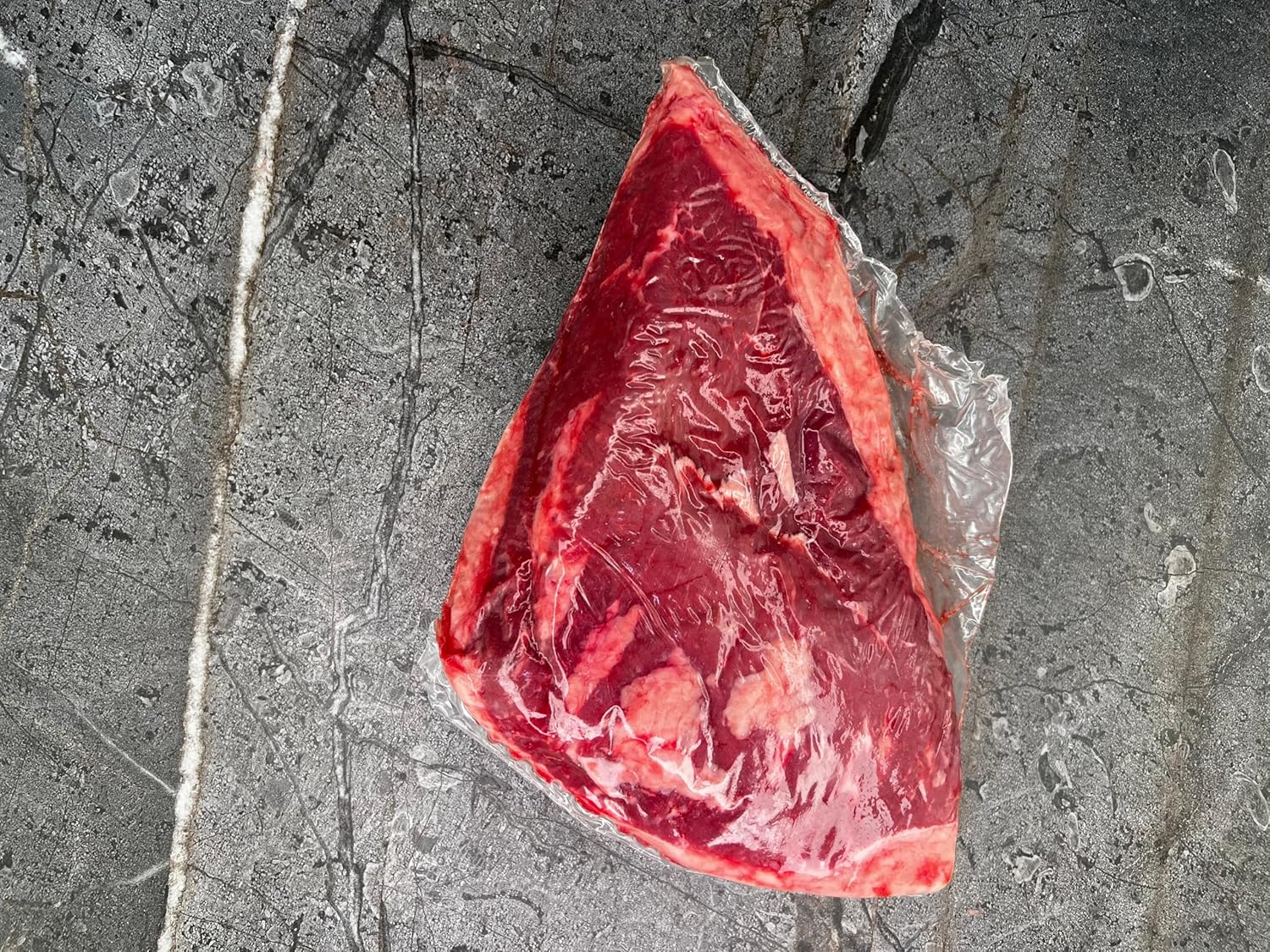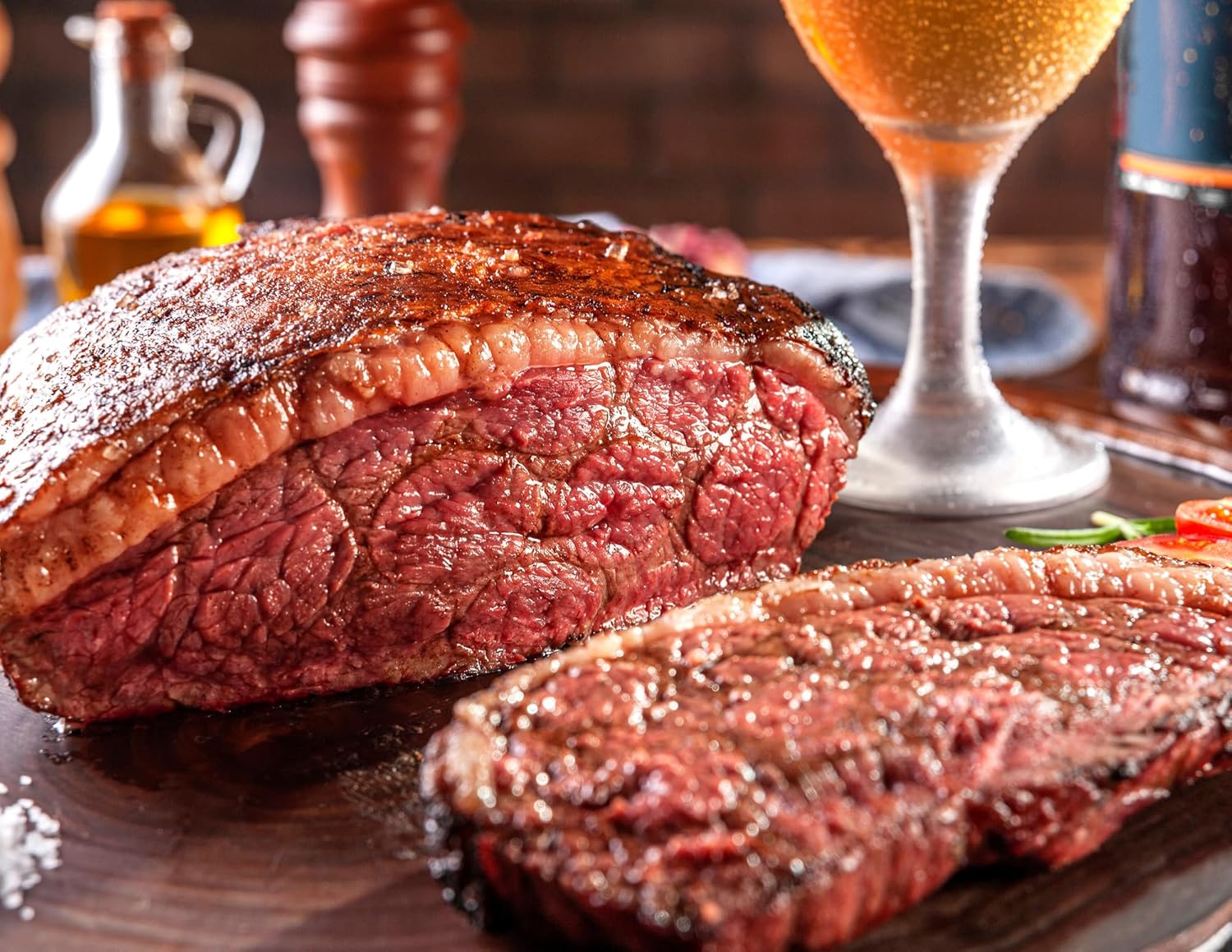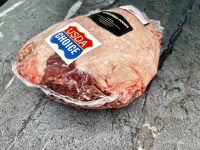
American Coulotte / Picanha BLACK ANGUS Review picanha steak Buying Guide – Oemiu
American Coulotte / Picanha Black Angus: A Deep Dive into Steak Perfection
The picanha, also known as the coulotte in the United States, is quickly becoming a darling of grill masters and home cooks alike. This cut, traditionally popular in Brazil, is now readily available and frequently celebrated for its rich flavor, tender texture, and affordability. But not all picanha is created equal. This article delves into the world of American Black Angus picanha, exploring its unique characteristics, how to select the best cut, and how to cook it to absolute perfection. We’ll examine what makes Black Angus so special, compare it to other picanha options, and equip you with the knowledge to confidently purchase and prepare this exceptional cut of beef.
Understanding the Picanha Cut: A Journey from Brazil to Your Grill
The picanha is a triangular cut located on the rump of the cow, specifically the top sirloin cap. It’s characterized by a thick layer of fat, often referred to as the “fat cap,” which is crucial for both flavor and moisture during cooking. This fat cap renders beautifully, basting the meat and creating a succulent, flavorful crust. In Brazil, picanha is often cooked churrasco-style – skewered and grilled over an open flame, allowing the fat to drip and smoke, infusing the meat with unparalleled flavor. But its versatility extends far beyond the traditional method. Whether roasted, pan-seared, or even sous vide, picanha delivers a consistently delicious experience. The term “coulotte steak” is the American term for a picanha steak. When purchasing a picanha, look for a piece with a uniform thickness and a bright red color. The fat cap should be firm and white, without any discoloration. A good picanha will have some marbling within the muscle as well, contributing to its overall tenderness and flavor.
The growing popularity of picanha has led to increased availability in American supermarkets and butcher shops. However, the quality can vary significantly. Understanding the grading system and knowing what to look for is essential to ensure you’re getting the best possible product. Consider factors like breed (Black Angus is a great starting point), grade (Prime, Choice, Select), and the overall appearance of the cut. A well-trimmed picanha with a consistent fat cap and vibrant color is a good indication of quality. Don’t be afraid to ask your butcher questions about the source and aging process of the meat. A knowledgeable butcher can provide valuable insights and help you choose the perfect picanha for your needs. Cooking picanha is relatively straightforward, but attention to detail is key. Scoring the fat cap before cooking helps it render evenly and prevents the meat from curling. Seasoning generously with salt and pepper is often all that’s needed to let the natural flavors of the beef shine through. Whether you’re a seasoned grill master or a novice cook, picanha offers a rewarding culinary experience.
Black Angus Distinction: Why It Matters for Picanha
Black Angus cattle are renowned for their superior marbling, which translates to richer flavor and more tender meat. Marbling refers to the intramuscular fat within the muscle tissue, and it’s a key indicator of quality in beef. Angus cattle, especially those raised under specific breeding programs and feeding regimes, consistently produce meat with higher marbling scores compared to other breeds. This makes Black Angus picanha a particularly desirable option. The fat in the marbling melts during cooking, basting the muscle fibers from within and creating a more succulent and flavorful result. The higher fat content also contributes to a richer, more decadent mouthfeel.
But what exactly defines “Black Angus?” To be certified as Certified Angus Beef (CAB), cattle must meet ten specific quality standards, including marbling, maturity, and size requirements. These standards ensure consistent quality and a premium eating experience. While not all Black Angus beef is CAB certified, the breed itself is predisposed to produce higher quality meat. When shopping for picanha, look for labeling that indicates Black Angus. While it’s not a guarantee of perfection, it’s a good starting point. Comparing the appearance of Black Angus picanha to other cuts will often reveal a noticeable difference in marbling. The more marbling you see, the more flavorful and tender the meat is likely to be. Bear in mind the higher the grade, such as Prime Black Angus picanha, the higher the marbling and therefore the richer the eating experience. The choice of grain-fed or grass-fed Black Angus also impacts flavor. Grain-fed often has a more consistent, sweeter flavor profile, while grass-fed can offer a gamier, earthier taste. Ultimately, the best choice depends on your personal preferences.
| Feature | Black Angus Picanha | Generic Picanha |
|---|---|---|
| Marbling | Generally higher, leading to more flavor and tenderness | Can vary significantly depending on breed and feeding |
| Flavor | Richer, more robust beef flavor | Flavor profile can be less consistent |
| Tenderness | Typically more tender due to higher marbling | Tenderness can vary |
| Price | Usually slightly more expensive | Generally more affordable |
Sourcing and Selecting Your American Coulotte Roast
Finding the perfect American coulotte roast, or picanha, requires a bit of detective work. Start by identifying reputable butchers or supermarkets known for their high-quality meat selections. Don’t hesitate to ask questions about the sourcing and aging process of their picanha. Ideally, you want to find a butcher who can tell you where the beef comes from and how it was raised. Online retailers specializing in premium meats are also a viable option, but be sure to read reviews and check their return policies.
When you’ve located a potential source, carefully examine the available cuts. Look for a picanha roast with a consistent thickness and a well-defined fat cap. The fat cap should be at least ¼ inch thick, preferably closer to ½ inch. Avoid cuts with excessively thin or uneven fat caps, as this can lead to a dry and less flavorful result. The color of the meat should be a bright, vibrant red, and the fat should be a clean, white color. Any signs of discoloration, such as brown or gray patches, are indicators of age or improper storage. Marbling is another crucial factor to consider. Look for fine streaks of fat running throughout the muscle tissue. The more marbling you see, the more tender and flavorful the meat will be. However, don’t be solely guided by marbling; a good fat cap is equally important for rendering and flavor infusion.
Finally, consider the size of the picanha. A typical picanha roast weighs between 2 and 3 pounds, which is usually enough to feed 4-6 people. If you’re cooking for a larger crowd, you may need to purchase multiple roasts. Remember to factor in cooking time when planning your meal. Picanha is best cooked to medium-rare or medium, so it’s essential to use a meat thermometer to ensure accurate doneness. Don’t be afraid to ask your butcher to trim the picanha to your specifications. If you prefer a more uniform shape or want to remove some of the silver skin, a skilled butcher can easily do this for you. Proper storage is also crucial. If you’re not planning to cook the picanha immediately, store it in the coldest part of your refrigerator, wrapped tightly in plastic wrap or butcher paper. It’s best to cook it within a few days of purchase for optimal freshness and flavor.
Preparing and Cooking Black Angus Picanha: Techniques and Tips
Cooking Black Angus picanha is an art form, and mastering it will elevate your grilling game. The key to success lies in proper preparation and execution. Start by removing the picanha from the refrigerator at least 30 minutes before cooking to allow it to come to room temperature. This will help the meat cook more evenly. Next, score the fat cap in a crosshatch pattern, being careful not to cut into the meat. This will help the fat render properly and prevent the meat from curling up during cooking. Season the picanha generously with salt and pepper. Some prefer to add garlic powder, paprika, or other spices, but the natural flavor of Black Angus is often best highlighted with simple seasoning.
There are several cooking methods suitable for picanha, each with its own advantages. The traditional Brazilian method involves skewering the picanha and grilling it over an open flame. This method allows the fat to drip and smoke, infusing the meat with incredible flavor. However, it requires constant attention and careful monitoring to prevent burning. Another popular method is roasting the picanha in the oven. Preheat your oven to 450°F (232°C) and place the picanha fat-side up on a roasting rack. Roast for about 15-20 minutes, then reduce the heat to 325°F (163°C) and continue cooking until the internal temperature reaches 125°F (52°C) for medium-rare. For a perfectly seared crust, finish the picanha under the broiler for a few minutes, watching carefully to avoid burning.
Alternatively, you can sear the picanha in a cast-iron skillet. Heat a tablespoon of oil in the skillet over high heat until smoking hot. Sear the picanha fat-side down for about 5-7 minutes, or until a deep golden-brown crust forms. Flip the picanha and sear the other side for another 3-5 minutes. Then, transfer the skillet to a preheated oven at 350°F (177°C) and cook until the internal temperature reaches your desired doneness. No matter which cooking method you choose, always use a meat thermometer to ensure accurate results. Resting the picanha is crucial for allowing the juices to redistribute throughout the meat. Cover the picanha loosely with foil and let it rest for at least 10 minutes before slicing. Slice the picanha against the grain for maximum tenderness. Serve immediately and enjoy the rich, flavorful experience of perfectly cooked Black Angus picanha. Remember you can also cook a Prime Black Angus Picanha the same way.
Serving Suggestions and Complementary Flavors
Once your Black Angus picanha is cooked to perfection, the final step is to present it in a way that enhances its natural flavors and textures. Traditional Brazilian accompaniments, such as chimichurri sauce, are a classic pairing. Chimichurri’s bright, herbaceous flavors cut through the richness of the beef, creating a harmonious balance. Rice and black beans are also common side dishes, providing a hearty and satisfying complement to the picanha.
However, picanha’s versatility allows for a wide range of culinary explorations. Consider pairing it with roasted vegetables, such as asparagus, Brussels sprouts, or sweet potatoes. Their subtle sweetness and earthy notes provide a counterpoint to the savory richness of the beef. For a more sophisticated presentation, serve the picanha with a creamy polenta or a truffle-infused mashed potato. The smooth, luxurious textures of these sides elevate the dining experience.
From a wine pairing perspective, a bold red wine is a natural choice for picanha. Cabernet Sauvignon, Malbec, or Shiraz are all excellent options. Their tannins help to cut through the fat, while their fruit-forward flavors complement the beef’s richness. For beer lovers, a robust porter or stout can also be a satisfying pairing. The roasted malt flavors of these beers harmonize with the smoky notes of the grilled or roasted picanha.
Don’t be afraid to experiment with different sauces and seasonings. A simple garlic-herb butter can add a touch of elegance, while a spicy chili sauce can provide a fiery kick. The key is to choose flavors that complement the natural taste of the Black Angus beef without overpowering it. Garnish the picanha with fresh herbs, such as parsley or cilantro, for a pop of color and freshness. And most importantly, serve the picanha immediately while it’s still warm and juicy. Whether you’re hosting a backyard barbecue or a formal dinner party, Black Angus picanha is sure to impress your guests with its exceptional flavor and tenderness.
FAQ: Your Picanha Questions Answered
What exactly is picanha, and where does it come from?
Is it the same as tri-tip?
Picanha is a cut of beef taken from the rump of the cow, specifically the top sirloin cap. It’s a triangular-shaped muscle with a thick layer of fat on one side, often called the fat cap. This fat cap is crucial for flavor and moisture during cooking. The cut is particularly popular in Brazil, where it’s often cooked churrasco-style on skewers over an open flame. It’s becoming increasingly popular in the United States as well, prized for its rich flavor, tenderness, and relatively affordable price point. It’s not the same as tri-tip, which comes from the bottom sirloin, is a more elongated, triangular shape, and generally lacks the substantial fat cap characteristic of picanha. While both cuts can be grilled or roasted, the picanha’s fat cap gives it a distinct advantage in terms of flavor and moisture retention.
Is Black Angus picanha worth the extra cost compared to regular picanha?
Black Angus cattle are known for their superior marbling, and marbling translates to tenderness and flavor. Black Angus Picanha, therefore, typically offers a richer, more robust flavor and a more tender texture compared to picanha from other breeds. Whether or not it’s “worth” the extra cost depends on your personal preferences and budget. If you’re looking for the absolute best possible picanha experience, Black Angus is a good choice. The higher marbling ensures a more succulent and flavorful result. However, if you’re on a budget, regular picanha can still be delicious, especially if you choose a well-marbled cut and cook it properly. Ultimately, it comes down to weighing the cost difference against the potential improvement in flavor and tenderness.
How do I properly score the fat cap on a picanha roast?
Scoring the fat cap on a picanha roast is essential for proper rendering and to prevent the meat from curling up during cooking. Use a sharp knife to make shallow cuts in a crosshatch pattern across the fat cap. The cuts should be about an inch apart and approximately ¼ inch deep, taking care not to cut into the meat itself. The goal is to create a grid-like pattern that allows the fat to melt evenly and release its flavorful juices into the meat. Scoring also helps to increase the surface area of the fat cap, which promotes better browning and crisping during cooking. This technique is particularly important when grilling or roasting picanha, as it ensures that the fat renders properly and doesn’t cause the meat to become unevenly cooked.
What is the ideal internal temperature for cooking picanha?
The ideal internal temperature for cooking picanha depends on your personal preference for doneness. However, most people agree that medium-rare or medium is the optimal range. For medium-rare, aim for an internal temperature of 125-130°F (52-54°C). For medium, aim for 130-135°F (54-57°C). Use a meat thermometer to accurately measure the internal temperature, inserting it into the thickest part of the meat, avoiding the fat cap. Remember that the internal temperature will continue to rise slightly after you remove the picanha from the heat, so it’s best to pull it off a few degrees before your target temperature. Resting the meat for at least 10 minutes after cooking is crucial for allowing the juices to redistribute and ensure a tender, flavorful result.
Can I cook picanha sous vide?
Yes, picanha is an excellent candidate for sous vide cooking. Sous vide involves cooking food in a water bath at a precise temperature, resulting in perfectly even cooking and exceptional tenderness. To cook picanha sous vide, first season it generously with salt and pepper. Place the picanha in a vacuum-sealed bag and cook it in a water bath at 130°F (54°C) for 2-4 hours, depending on the thickness of the cut. After sous vide cooking, the picanha will be cooked to a perfect medium-rare throughout. However, it will lack the desirable crust and browning. To achieve this, sear the picanha in a hot cast-iron skillet or under a broiler for a few minutes per side, until a deep golden-brown crust forms. This final sear adds flavor and texture, transforming the sous vide picanha into a truly exceptional dish.
What are some good side dishes to serve with picanha?
Picanha pairs well with a variety of side dishes, both traditional and modern. Classic Brazilian accompaniments like chimichurri sauce, rice, and black beans are always a great choice. Chimichurri’s bright, herbaceous flavors cut through the richness of the beef, while rice and black beans provide a hearty and satisfying complement. Other excellent side dish options include roasted vegetables such as asparagus, Brussels sprouts, sweet potatoes, or bell peppers. The sweetness and earthiness of these vegetables balance the savory richness of the picanha. For a more indulgent side, consider creamy polenta, mashed potatoes (perhaps infused with garlic or truffle oil), or a decadent mac and cheese. Ultimately, the best side dishes are those that complement the flavor profile of the picanha and suit your personal preferences.
How should I store leftover cooked picanha?
To properly store leftover cooked picanha, first allow it to cool completely to room temperature. Once cooled, wrap the picanha tightly in plastic wrap or aluminum foil and store it in an airtight container in the refrigerator. Cooked picanha can be safely stored in the refrigerator for up to 3-4 days. When reheating, it’s best to use a gentle method to prevent the meat from drying out. Slicing the picanha thinly and gently warming it in a pan with a little bit of beef broth or au jus is a good option. Alternatively, you can reheat it in the oven at a low temperature (around 250°F or 121°C) until it’s warmed through. Avoid microwaving leftover picanha, as this can often result in a tough and dry texture.
